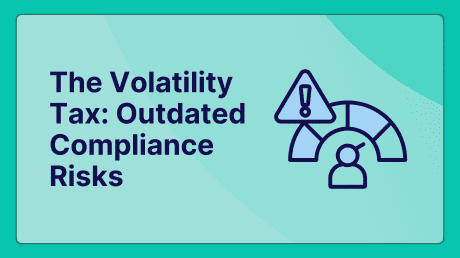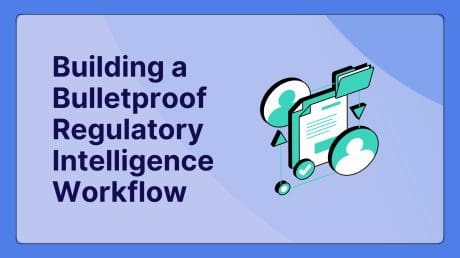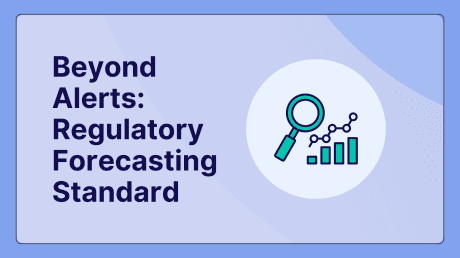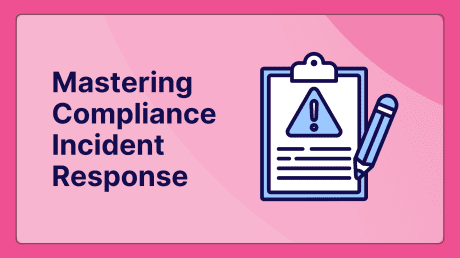
The Biweekly Pulse: 6th – 17th October – CBAM Regulation, Packaging, and RoHS Exemptions Updates

The Pulse was originally posted on 22nd October, 2025. Further regulatory developments may have occurred after publication. To keep up-to-date with the latest compliance news, sign up to our newsletter.
Check out the latest 2025 Regulatory Compliance Updates with The Pulse, your biweekly source for global regulatory insights!
This Week’s Trending Sources in C2P
- Chemicals Quarterly – Q3 Regulatory Update 2025, Webinar Presentation, October 2025
- EU: What You Need to Know About the Updated PFAS Restriction Dossier, Summary, October 2025
- Ireland: Review of the WEEE and Batteries Producer Responsibility Schemes, Consultation Document, September 2025
What is Our Content Team Talking About?
The EU Approves and Publishes Much Anticipated Omnibus Amendment to CBAM Regulation
by Célia Le Lièvre, Senior Regulatory Compliance Specialist
On 17 October 2025, the Omnibus amendment to the CBAM Regulation (Regulation (EU) 2023/956) was published in the EU Official Journal as Regulation (EU) 2025/2083. Initially proposed on 26 February 2025, the amendment aims to simplify and streamline the operation of the Carbon Border Adjustment Mechanism (“CBAM”).
The draft was approved by the European Parliament on 10 September 2025, with 617 votes in favor, 18 against, and 19 abstentions, and subsequently received Council approval on 29 September 2025.
The final text, consistent with the version approved by the Parliament and Council in September, introduces a single mass-based exemption threshold to replace the previous value-based threshold of €150 per consignment. Under this new framework, small importers will benefit from a “de minimis” exemption set at 50 tons of imported goods per importer per year. In practical terms, if the total net mass of all goods imported by an importer within a given calendar year does not exceed 50 tons, that importer will be exempt from all CBAM obligations for that year. The exemption covers both the obligation to submit a declaration on embedded emissions and the requirement to purchase and surrender certificates.
This single-mass based threshold would apply cumulatively across all goods falling within the sectors of iron and steel, aluminum, fertilizers, and cement. However, it does not apply to imports of electricity or hydrogen.
Importers anticipating that their imports will exceed the single mass-based threshold must apply for authorized CBAM declarant status before reaching the limit. A transition period will permit importers and indirect customs representatives who submit an application before 31 March 2026 to continue importing CBAM goods throughout 2026 – and until the competent national authority issues its decision on their application – even if they exceed the threshold.
The final text preserves most of the changes adopted by the Parliament. Additional simplifications for importers exceeding the single-mass based threshold therefore include:
- Extended deadline for submitting CBAM declarations and surrendering CBAM certificates (via the CBAM registry): authorized CBAM declarants should submit their annual CBAM declaration and surrender the corresponding number of certificates by 30 September of the year following the year of importation of the good.
- Reduction of the ratio of embedded emissions that purchased CBAM certificates shall correspond to at the end of each quarter to 50% (instead of 80%) of the emissions embedded in the goods imported since the start of the year; As such, from year 2027, authorized CBAM declarants shall ensure that the number of certificates on their CBAM registry account at the end of each quarter corresponds to at least 50% of the embedded emissions in all goods it has imported since the beginning of the calendar year.
- CBAM declarants will be allowed to reduce the number of certificates to be surrendered to reflect the carbon price already paid in a third country for the declared embedded emissions.
- Authorized CBAM declarants will be able to delegate the submission of the CBAM declaration to a third party.
In addition, the final amendment defers the obligation to purchase CBAM certificates until the first quarter of 2027. The sale of CBAM certificates by Member States, covering embedded emissions in goods imported during 2026, through a centralized common platform will begin on 1 February 2027. Certificates purchased in 2027 for 2026 imports will be priced based on the quarterly average of EU ETS allowance prices for 2026. From 2028 onwards, the price of CBAM certificates will correspond to the weekly average of EU ETS auction closing prices.
The amendment contains several amendments concerning the calculation of embedded emissions. In particular, it provides that embedded emissions may be determined using either default values or actual values verified by accredited verifiers. Default values should be calculated and made available by the Commission. The default value should be set at the level of the average emission intensity of the then exporting countries with the highest emission intensities when reliable data is not available.
The amending Regulation shall enter into force on 20 October 2025.
This only marks the initial phase of the CBAM’s evolution. More legislative amendments are planned for 2025, including targeted amendments to extend the scope of CBAM to downstream products and upcoming methodologies for calculating embedded emissions and adjusting CBAM certificates to reflect the EU ETS free allocation.
What Are Our Knowledge Partners Talking About?
United Kingdom – Packaging: Single PRO Confirmed for Household Packaging; Disposal Fees & RAM Finalized
by SagisEPR
Household packaging producers will face a single compliance option – joining the forthcoming single industry-led PRO to meet their obligations. PackUK has now finalized the first disposal fees, with payments due from Oct-25. From 2026, these fees will be modulated using the newly finalized Recyclability Assessment Methodology (RAM).
Background
The Producer Responsibility Obligations (Packaging and Packaging Waste) Regulations 2024 (SI 1332) (in force since Jan-25) introduced a fundamental overhaul of the UK packaging regime.
The reform created PackUK, a sovereign scheme administrator to manage disposal fees and local authority funding. During the course of the reform, ministers also endorsed the creation of an industry-led single PRO for household packaging waste to centralize the acquisition of Packaging Recovery Notes (PRNs/PERNs).
While multiple PROs remain permitted by law, their operations will be limited to non-household packaging, where the existing PRN/PERN system continues unchanged.
Single PRO for household packaging and division of functions between the two bodies
In May-25, the UK governments launched an Expression of Interest (EOI) to identify candidates to operate the single PRO under the new packaging regime, confirming a monopoly model for household packaging alongside PackUK.
Only “not-for-profit body corporates” are eligible to apply, and candidates must demonstrate broad producer support across packaging sectors as well as backing from local authorities and other stakeholders. A formal appointment process will follow in Autumn 2025.
The EOI also sets out a phased transfer of functions from PackUK to the PRO between 2026 and 2029:
- PackUK will permanently retain sovereign functions such as setting disposal fees, owning and signing off methodologies and models, enforcement of late payments, appeals and complaints, and the distribution of producer-paid fees to local authorities.
- The single PRO will take on delegated functions including publishing modulation criteria, managing public awareness campaigns, and assessing local authority performance, and the administration of local authority payments from 2028/29.
This creates two separate monetary flows for household packaging producers:
- Recycling fees paid by producers to the single PRO, which acquires PRNs/PERNs from recyclers to cover household packaging recycling obligations.
- Disposal fees paid by producers directly to PackUK, which uses the funds to compensate local authorities to cover household waste packaging management costs and public awareness campaigns.
Disposal base fees for 2025 finalized by PackUK
On 30-Jun-25, PackUK published the first schedule of disposal fees payable by large household packaging producers for the 2025-2026 compliance period.
The fees (weight-based and set by material type) are mostly lower than the Dec-24 estimates (and close to those of Sep-24): Aluminum saw the largest correction (almost -40%), while glass, steel, plastic, and wood were lowered between 10 and 20%, and paper and ‘other’ materials by below 10%. Fiber-based composites were the only category to increase slightly.
| Material | Second estimates (GBP) (Sep-24) (low / intermediate / high) | Third estimates (GBP) (Dec-24) | Final (GBP) (Jun-25) | % ∆ (final vs. third) |
| Paper/Card | 135 / 190 / 250 | 215 | 196 | -8.8% |
| Fiber-based composite | 355 / 450 / 565 | 455 | 461 | +1.3% |
| Glass | 110 / 175 / 215 | 240 | 192 | -20% |
| Aluminum | 320 / 405 / 605 | 435 | 266 | -38.9% |
| Steel | 220 / 265 / 330 | 305 | 259 | -15.1% |
| Plastic | 360 / 425 / 520 | 485 | 423 | -12.8% |
| Wood | 145 / 240 / 340 | 320 | 280 | -12.5% |
| Other | 180 / 205 / 240 | 280 | 259 | -7.5% |
Note: The fees were calculated by dividing local authority disposal costs (net of material revenues), plus PackUK’s administrative and communications costs, across the producer reported weight of household packaging POM.
The first disposal fee payment is due on 1-Oct-25, based on large producers’ 2024 data, with payments expected to be paid quarterly thereafter. The 2025 rates are unmodulated, with modulation applying from the 2026 compliance period (see below).
RAM reporting to commence from Oct-25
On 23-Dec-24, Defra published the final Recyclability Assessment Methodology (RAM), with a minor update (v1.1) issued in Apr-25. The RAM establishes a framework categorizing packaging components as green (widely recyclable), amber (recyclable with challenges), or red (difficult to recycle) to determine the level of modulated disposal fees from 2026 onwards.
Large producers of household packaging, packaging commonly disposed of in public bins, and glass beverage containers (excl. reused and DRS packaging) are required to assess their packaging using the RAM and the first RAM reports must be submitted by 1-Oct-25, covering packaging POM in H1-25.
Revised packaging regime: Obligations schedule
| Deadline | Obligation |
| 31-May-24 (postponed from 1-Apr-24) | Large producers report 2023 data |
| 1-Oct-24 | Large producers register and report H1-24 data |
| 1-Apr-25 | Large producers report H2-24 data Small producers register & report 2024 (full year) data |
| Autumn 2025 | UK governments formally appoint the single PRO Note: Although a deadline for joining the single PRO is forthcoming, household packaging producers are expected to be required to join the single PRO around the date of approval, ahead of the 2026 compliance period. |
| 1-Oct-25 | Large producers renew registration, report H1-25 data, pay first disposal fees to PackUK (based on 2024 data, unmodulated), and submit first RAM report (H1 2025) |
| 1-Jan-26 | Large producers pay disposal fees to PackUK (Q2) |
| 1-Apr-26 | Large producers report H2-25 data, submit RAM report (H2-25), and pay disposal fees (Q3) Small producers renew registration & report 2025 (full year) data |
| 1-Jul-26 | Large producers pay disposal fees to PackUK (Q4) |
| 1-Oct-26 | Large producers renew registration, report H1-26 data, and pay disposal fees (Q1 2026/27 compliance period) Modulated fees now apply based on RAM |
What Are Our Clients Asking About?
Regarding the RoHS exemptions for high temperature solders; alloying element in steel, aluminum and copper; and lead in glass or ceramic to mid-2027: is it likely for them to get further extensions and temporary continuation during evaluation?
Answered by Joyce Costello, Senior Regulatory Compliance Specialist
It will be possible to renew the exemptions again.
The relatively short validity periods were specifically set to give industry time to prepare and submit renewal requests with more detailed, substantiated information for the next assessment.
According to the Directive, renewal requests need to be submitted at least 18 months before the expiry date. The submission of a renewal application has the effect of extending the validity of an existing exemption until a decision on the renewal is taken.
If it happens in the next assessment round that the Commission considers there is insufficient, incomplete, or unsubstantiated data in the renewal application, and consequently a failure to demonstrate that one of the Article 5(1)(a) criteria is met, the Commission “must consider not renewing the exemption due to a lack of missing data”.
When a decision is made that an exemption no longer meets the criteria, the exemption is revoked or not renewed. However, a transitional period of 12 to 18 months is typically granted to allow manufacturers to adapt.
Stay Ahead Of 2025 Regulatory Compliance Updates with The Pulse
Want to stay on top of 2025 Regulatory Compliance Updates?
All insights in The Pulse come directly from C2P – the trusted compliance platform used by over 300 of the world’s leading brands. With coverage across 195+ countries, C2P empowers you to achieve, maintain, and expand market access faster and with confidence.
C2P is an enterprise SaaS platform designed to meet your unique compliance needs. It brings together everything in one place – regulations, standards, requirements, and evidence – so you can manage compliance across the enterprise with ease.
Need more? Our tailored add-on packages unlock use-case-specific solutions, enriched global regulatory content, and direct access to a global team of subject matter experts and professional services.
C2P is your key to unlocking global market access.
- Accelerate time-to-market for products
- Reduce non-compliance risks that impact your ability to meet business goals and cause reputational damage
- Enable business continuity by digitizing your compliance process and building corporate memory
- Improve efficiency and enable your team to focus on business critical initiatives rather than manual tasks
- Save time with access to Compliance & Risks’ extensive Knowledge Partner network
Keep Your Finger on the Pulse of Regulatory News!
Join 30,000+ compliance professionals for 2025 regulatory compliance updates on hot compliance issues, market insights on the latest trends, and free regulatory webinars and whitepapers








